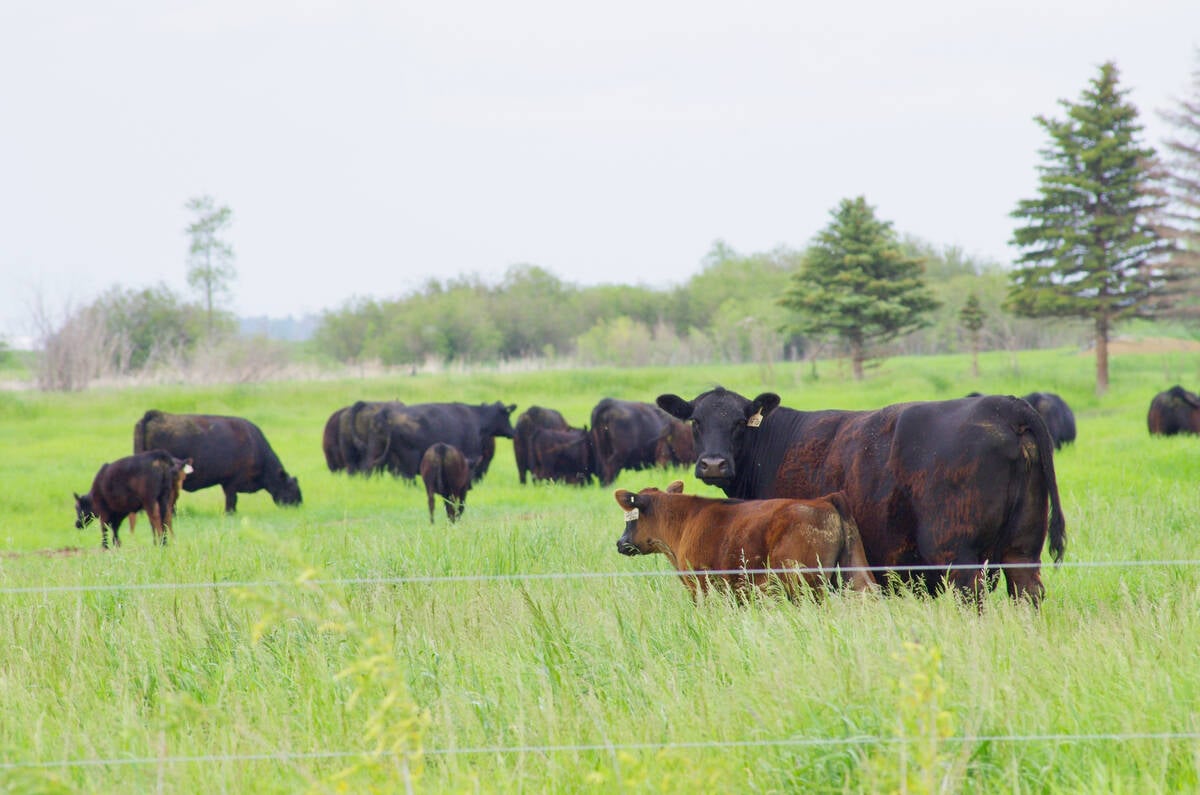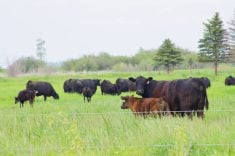EDMONTON – Instead of eyeing each other warily across the fence line, cattle and grain producers should work together, says a pair who have joined forces to promote the benefits.
Saskatchewan cattle rancher Bruce Chern and grain farmer Murray Pask said the benefits of working together are positive, especially when growing alfalfa.
When Chern sold his ranch near Smoky Lake in northeastern Alberta and moved to Stockholm, Sask., hay was scarce, especially good quality alfalfa he needed for his 550 cows.
Chern said he discovered a hidden gem when he bought in southeastern Saskatchewan. Land prices were lower than Alberta and the property had better soil.
Read Also

Tick research from the University of Manitoba focuses on insects and testing
Manitoba researchers are looking into the effects of tick and fly disease in cattle.
But it was grain country, not cattle country.
Chern seeded most of his 4,000 acres to alfalfa, legumes and grass to use for intensive grazing, but he still needed extra feed for the cattle.
“I can’t totally graze year round,” Chern told the Western Canadian Grazing Conference.
Finding a good source of hay nearby was almost impossible. Using his computer spreadsheet and standard custom rates, he estimated he could pay his neighbours $35 an acre to rent him their best land for alfalfa. The standard rent for grain land in the area is $25 an acre.
Chern estimated $12 an acre for cutting, $8 an acre for baling and $4.50 an acre for trucking within eight kilometres of the farm.
The best land could produce three 1,500 pound alfalfa bales per acre. That would translate into 13/4 cents per lb. for feed, or about $35 a tonne. A two bale crop would cost $40 a tonne. At that rate, both rancher and farmer would get a good deal, Chern said.
Even with his spreadsheet data, his farming neighbours weren’t keen to take their best land out of grain and seed it to alfalfa. To them, alfalfa meant pastures. Pastures meant weeds, moles and Richardson’s ground squirrels.
“How do I talk my neighbours into growing alfalfa?” Chern wondered.
He did it with the help of nearby pedigreed seed producer Murray Pask, who has grown seed alfalfa for 35 years as part of his seed farm’s crop rotation.
“He was trying to twist all the neighbours’ arms to get one good quarter of land to grow alfalfa and they weren’t going for it,” Pask told the conference.
“It was a tough sell. When they think ranch, they think dandelions.
The secret to growing alfalfa without the hassles is short rotations, said Pask. He only keeps alfalfa in production for three or four years before returning it to grain.
Three to four years in pasture is too short for the dandelions, moles or gophers to become trouble and long enough to get the benefits of nitrogen fixation from the alfalfa.
Pask said there are other benefits for the farmers.
Taking the land out of grain production breaks the cycle of disease, insects and weeds that can develop with continuous grain crops. Putting the land into alfalfa improves the organic matter of the soil, provides better water filtration and helps the environment.
One of the biggest gains is the long-term nitrogen benefit from alfalfa’s ability to fix nitrogen from the air into the soil. Pask estimated he gets $100 an acre benefit from the alfalfa crop in the following years.
“It’s a winning deal for young progressive ranchers and miserable, old grain farmers,” said Pask.
“The rancher gets hay close and the grain farmer gets cash rent,” he said.
Since the pair has worked together, Chern has been able to strike agreements with neighbours for 22 quarters of land. Because there are few cattle producers in the area, Chern bought custom equipment and hays the 22 quarters for his ranch and three others.
“Every one of them haven’t given us their worst quarter. They’ve given us their best quarter,” said Chern.
















